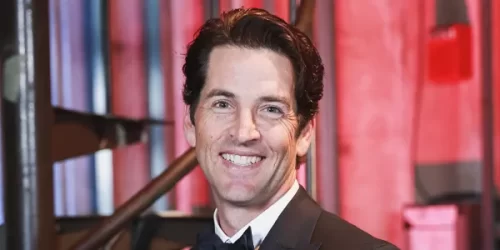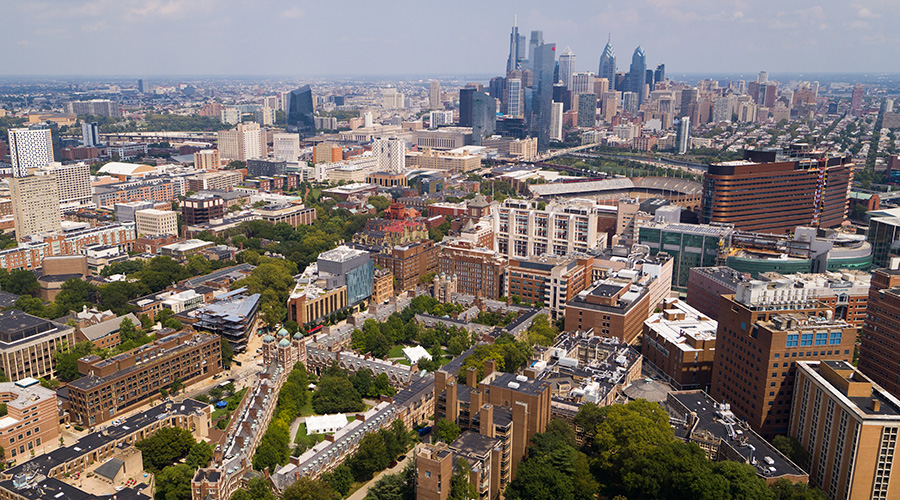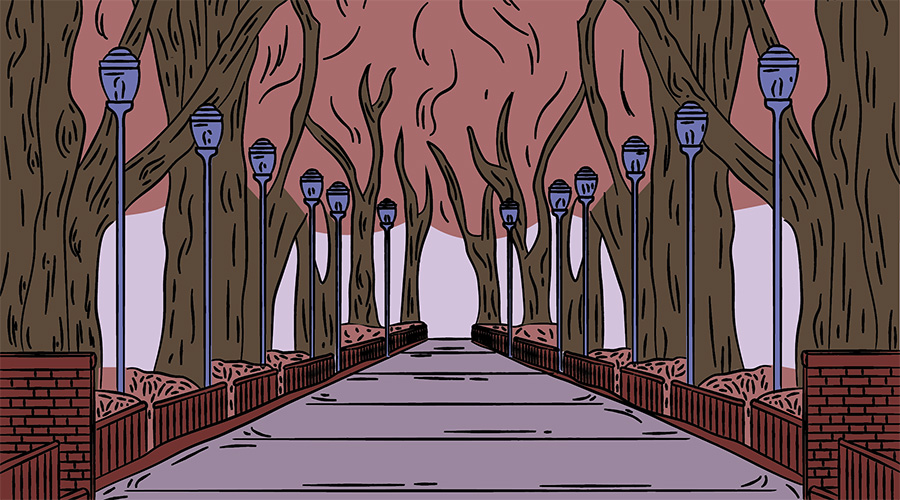Upwards of 25 percent of the undergraduate student body breathes life into Penn’s performing arts.
A Seat for Everyone at Penn Live Arts
Kyle Kozloff, W’90, PAR'25, has dedicated serious thought to Penn’s performing arts—and now, he’s dedicated a theater seat in honor of his graduate
From a cappella showcases to jazz ensembles to stage adaptations of both Henry II and Gossip Girl, students devote countless hours to the pursuit of creative expression and execution.
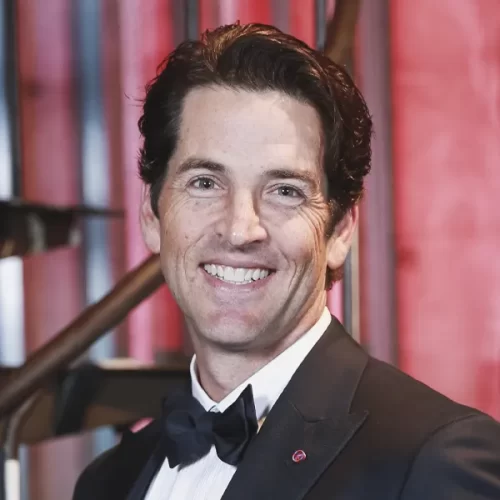
Kyle Kozloff, W’90, PAR’25, knows this firsthand—a dedicated alumni member of The Mask and Wig Club, he’s trod the boards of almost every Penn stage and continues to return regularly to campus in his capacity as a volunteer leader on Penn Live Arts’ Board of Advisors, philanthropist, and father of a current Penn senior.
In a recent interview, he sat down to talk about the value of performing in the right space, caricatures in the Mask and Wig clubhouse, and why he’s excited about the Penn Live Arts “Name-A-Seat” campaign.
This interview has been edited for concision and clarity.
Q: You have an extensive history in the performing arts. Can you give us the nickel tour of your experience at Penn?
Kyle: I did a lot of performing in high school. So, when I got to Penn, I auditioned for a couple of groups, including The Mask and Wig Club, which at the time was the nation’s oldest all-male collegiate musical comedy group. Now, looking back, Mask and Wig is really where I honed my chops in terms of being a better performer, a better writer, a better creative thinker in general. It’s really shaped everything I would become afterwards as a professional, even though I did not go into acting.
Q: What venues did you perform at with Mask and Wig?
Kyle: Mask and Wig is fortunate in that we have a clubhouse downtown that was purchased in the late 1800s through profits from the Club’s early shows as well as through alumni member donations. That clubhouse is where we held our spring shows during my years as an undergrad. Every fall we would put on a show in Houston Hall, in the Class of 1949 Theater.
And then of course, we would also do floor shows, a series of songs and sketches that we could perform at the drop of a hat across campus or at private venues in the greater Philadelphia area.
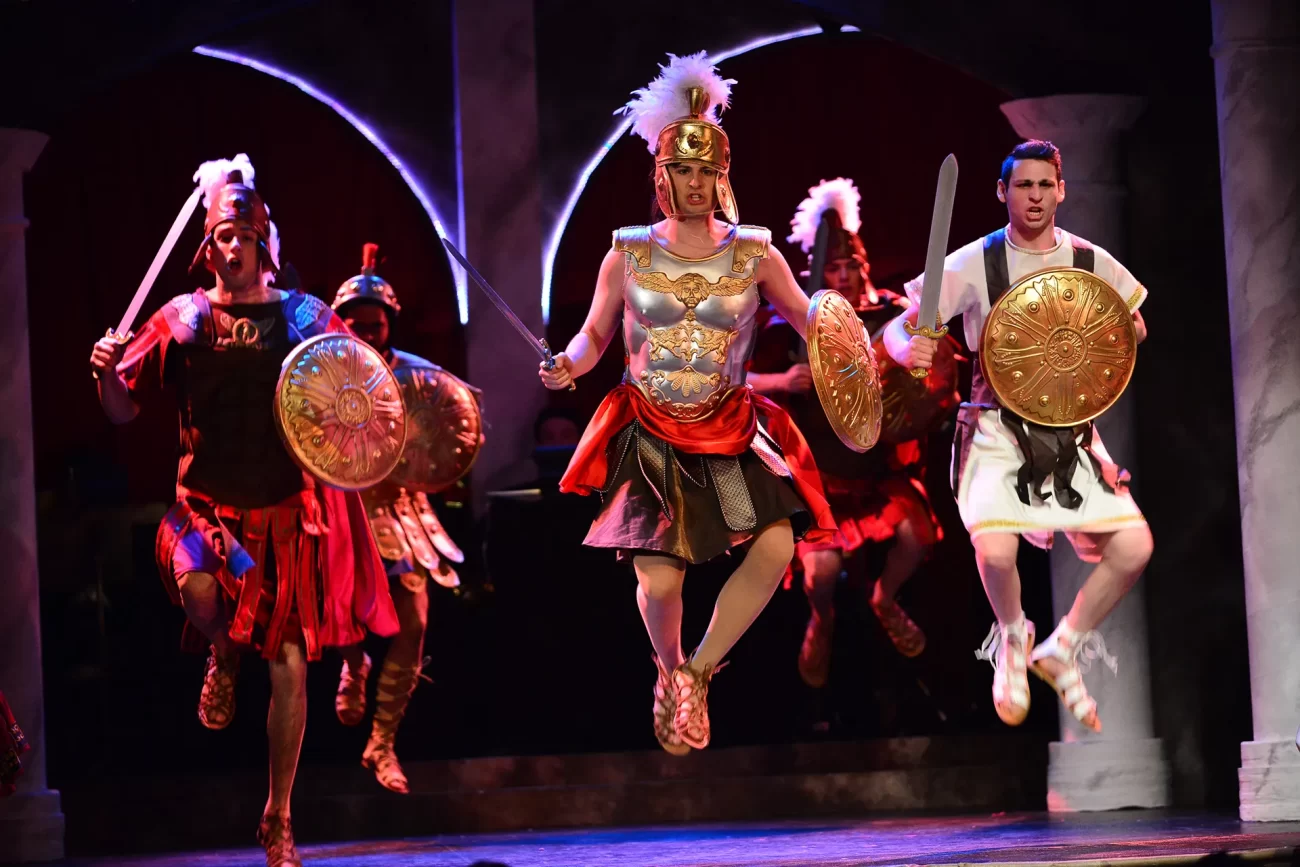
Q: Tell us more about the impact of space on performance.
Kyle: Mask and Wig was always fortunate to be able to perform two shows in spaces designed for traditional theater. You had the proscenium, you had wings, you had scrims, you had olios, you had lighting designed for that space. Having that infrastructure frees performers, producers, directors, and tech to push their creative horizons, and it liberates them from practical constraints that can interfere with the audience’s experience, too.
Being in the “wrong” space can make it a lot harder on both the performers and the audience. I’ll give you an example: as a sophomore, I joined a group called Quadramics that mounted a production of Jesus Christ Superstar, which was allocated space in Irvine Auditorium for the run. Irvine is a beautiful space, but its soaring ceilings and odd shape made it notoriously ill-equipped for a theatrical stage production in the 1980s. Our director made a number of compromises to bring the show to the stage, and while I am proud of our efforts, I feel the production would have had a much better impact on audiences in an appropriate theater. Sadly, that infrastructure has always been in short supply at Penn.
That’s why it’s particularly exciting to see Penn Live Arts grow with Prince, Zellerbach, and now the Iron Gate Theatre. With the construction of the new student performing arts center on Hill Field, that means two additional theatres are opening their doors in 2027. Knowing the performing arts community at Penn, I’d be willing to bet this new campus space will be in constant use from the day it opens.
Q: Speaking of infrastructure, you were one of the first people to “name a seat” at Penn Live Arts, which you did in honor of your daughter, Lily, who has been involved in the performing arts during her time at Penn. How did your experiences as a performer and the father of a performer inform that decision?
Kyle: I was really excited to hear this campaign was coming to fruition, because from a selfish perspective, it’s a great way to honor my daughter by saying, ‘yes—you, you are a part of this. You are permanently a part of the Penn undergraduate performing arts community.’ When she someday returns to visit campus, she’ll be able to walk in and rub her finger over that plaque and remember this part of her life here. It’s something I’m fortunate to have in the grille room of the Mask and Wig clubhouse, which is filled with caricatures of its members in roles they were known for as undergraduates. I want Lily to have that same sense of connection.
And, of course, at the same time I’m helping Penn continue the opportunity to improve and maintain the infrastructure of performing arts. It’s not about supporting a specific theater like Zellerbach or Harold Prince—I’m supporting the arts, which I think are critical for the future of the university.
Q: Can you elaborate on that?
Kyle: We’re nearing a point where technology can arrive at an endpoint more quickly and with as much accuracy as a human. But people—people have an innate sense of creativity. And if we are not teaching our brightest minds how to use that sense, we are missing the point, which is that our human creativity is still valuable to society.
I don’t just mean being creative in the theater: I mean thinking about and responding to ideas with new insights. To do that, you must practice being creative. You must develop the confidence to accept and respond to information in a way that’s not just analytical.
In theater, that’s required of both performers and audiences. Penn has and continues to stress those skills by making room for the arts as an integral part of its mission. And that’s a goal I am happy to support.


